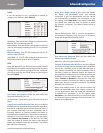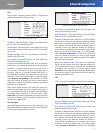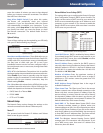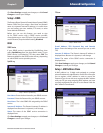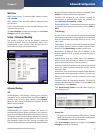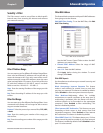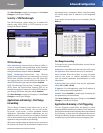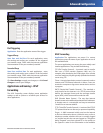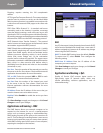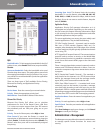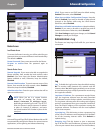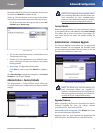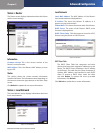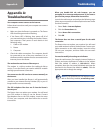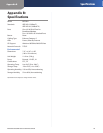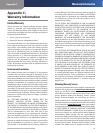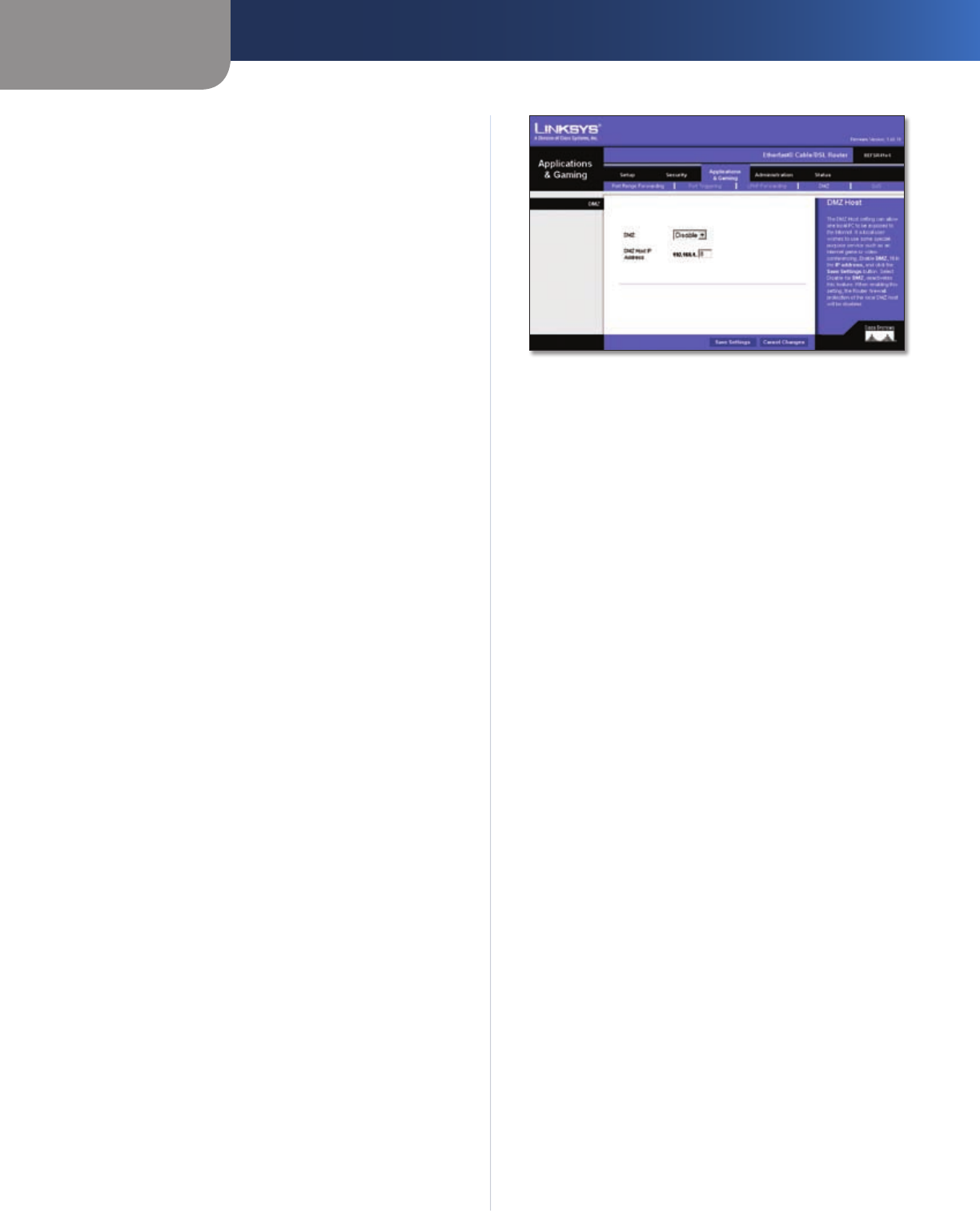
Chapter 2
Advanced Configuration
12
EtherFast Cable/DSL Router with 4-Port Switch
Fingering requires entering the full user@domain
address.
HTTP (HyperText Transport Protocol) - The communications
protocol used to connect to servers on the World Wide
Web. Its primary function is to establish a connection with
a web server and transmit HTML pages to the client web
browser.
POP3 (Post Office Protocol 3) - A standard mail server
commonly used on the Internet. It provides a message
store that holds incoming e-mail until users log on and
download it. POP3 is a simple system with little selectivity.
All pending messages and attachments are downloaded at
the same time. POP3 uses the SMTP messaging protocol.
NNTP (Network News Transfer Protocol) - The protocol
used to connect to Usenet groups on the Internet. Usenet
newsreaders support the NNTP protocol.
SNMP (Simple Network Management Protocol) - A widely
used network monitoring and control protocol. Data is
passed from SNMP agents, which are hardware and/or
software processes reporting activity in each network
device (hub, router, bridge, etc.), to the workstation
console used to oversee the network. The agents return
information contained in a MIB (Management Information
Base), which is a data structure that defines what is
obtainable from the device and what can be controlled
(turned off, on, etc.).
Ext. Port. Enter the number of the external port used by
the server in the Ext. Port column. Check with the Internet
application documentation for more information.
TCP or UDP Select the protocol UDP or TCP for each
application. You cannot select both protocols.
Int. Port Enter the number of the internal port used
by the server in the Int. Port column. Check with the
Internet application software documentation for more
information.
IP Address Enter the IP address of the server that you
want the Internet users to be able to access.
Enabled Select Enabled to enable the service you have
defined.
Click Save Settings to apply your changes, or click Cancel
Changes to cancel your changes.
Applications and Gaming > DMZ
The DMZ feature allows one network computer to be
exposed to the Internet for use of a special-purpose
service such as Internet gaming or videoconferencing.
DMZ hosting forwards all the ports at the same time to
one PC. The Port Range Forwarding feature is more secure
because it only opens the ports you want to have opened,
while DMZ hosting opens all the ports of one computer,
exposing the computer to the Internet.
Applications and Gaming > DMZ
DMZ
Any PC whose port is being forwarded must have its DHCP
client function disabled and should have a new static IP
address assigned to it because its IP address may change
when using the DHCP function.
DMZ To disable DMZ hosting, keep the default, Disable.
To expose one PC, select Enable. Then configure the
following setting:
DMZ Host IP Address Enter the IP address of the
computer you want to expose.
Click Save Settings to apply your changes, or click Cancel
Changes to cancel your changes.
Applications and Gaming > QoS
Quality of Service (QoS) ensures better service to
high-priority types of network traffic, which may
involve demanding, real-time applications, such as
videoconferencing.



